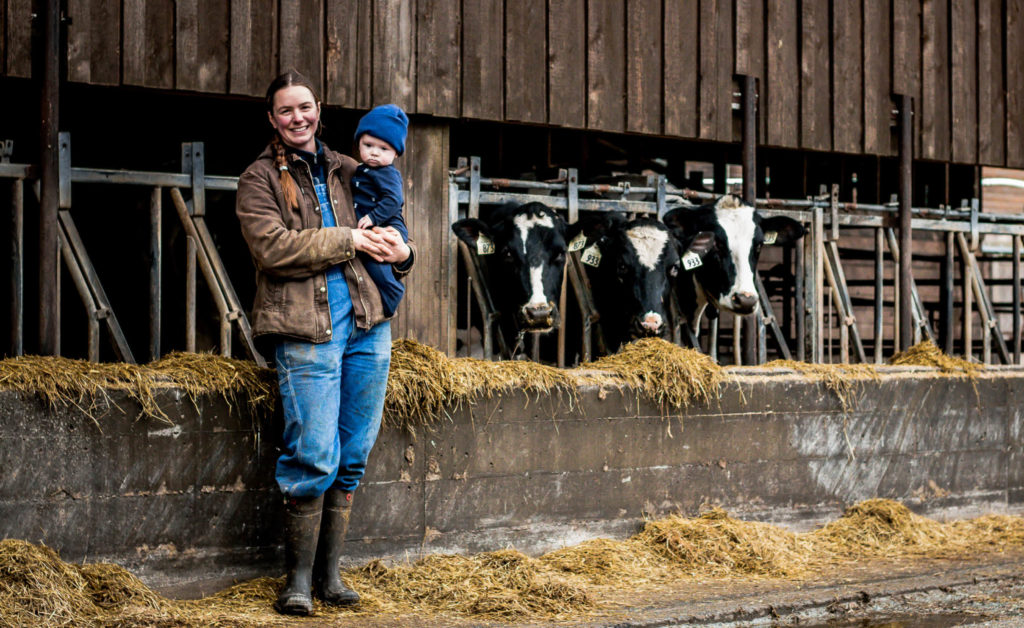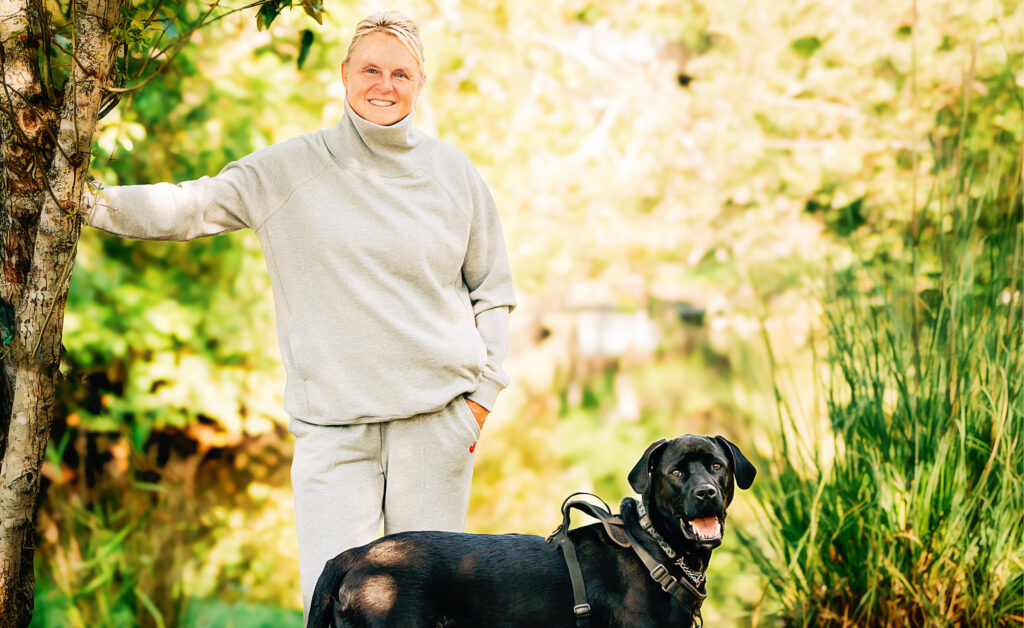by Jo Barnes | photo by Amanda Cribdon Photography –
Family is important, whether it’s a new arrival or connecting to the past … even if those family members are four-legged and can swat you with their tail!
Mickey Aylard is a fourth-generation farmer at Brackenhurst Farm, a thriving dairy farm in North Saanich, and her passion for her work is grounded in a deep respect for family heritage.
“Family legacy is important, and I want to preserve that,” shares Mickey, who is a new mom herself. “My parents worked hard. That kind of work benefits the next generation. It’s important to honour that.”
Mickey’s great grandfather began farming in the Sooke area in 1930, eventually moving to the present property on Wain Road. The farm has been passed generation to generation, and now Mickey and her father primarily run the operation.
Living on a farm and working with cows are second nature to this enthusiastic farmer. “I was born here on the farm. I’ve grown up with farming,” says Mickey. “It’s what I know; it’s in my blood.”
Named for the bracken fern which grows wild there, Brackenhurst Farm is a 300-acre property boasting a great biodiversity within its forest, fields and gardens. It is home to 250 cows, 100 of which are dairy cows for milking. Mickey takes care of the cattle, a job involving overseeing feeding, monitoring health, and of course breeding.
The importance of family roots extends to the livestock on the farm. “Every cow has a name here. A cow’s name begins with the same first letter as its mom,” shares Mickey. “For example, there is Rose, Rosie, Roxanne or Duster, Dusty, Dusted. This helps to keep the family lines straight.”
Since she was young, Mickey has had an affinity for these animals. “Cows are really incredible. They’re smart and can figure things out,” she says. “Growing up, I always knew I wanted to do this.”
Her interest in this field took her to Washington State University where she completed a degree in Agriculture Economics. It was also the place where she met Angus Todd, now her husband, who would go on to complete a business degree at the University of British Columbia.
The work of a dairy farmer requires drive, dedication and downright hard work. “Sometimes it’s relentless, like dealing with the heat and maintaining long hours,” shares Mickey. “At the end of the day, though, I have a feeling of accomplishment.”
Oftentimes it means a change of plan to the daily routine and some sacrifices along the way. “You make plans and then suddenly a cow is calving and you can’t leave,” shares Mickey. “It is hard in the moment, but you have to make sacrifices. It is the life I choose.”
While the daily labour is demanding, a new way of milking, introduced in 2018, has significantly streamlined the milking process. The farm began using an automatic system whereby a cow can walk up to a robotic machine that locates the udder and milks the cow. You could say the cows are milking themselves! The new system has proven very effective.
“It gives more flexibility to the farmer as there are no longer rigid schedules,” says Mickey. “It also gives flexibility to the cows. Every cow is on its own schedule. It is one cow at a time. Each cow chooses her own time.”
Once the milk is collected, it’s transported to the bulk tank where it cools to 4°C and then retained on the farm until the milk truck arrives to deliver it to the plant for processing.
Whether it’s the feed for the cows, their feeding routines or general daily farm maintenance and processes, all is done with a view of sustainability.
Cover cropping is practised, which significantly impacts the farm’s carbon footprint. A crop is planted to protect the soil from wind and water erosion.
“We do cover crops in the fall. We plant barley and rye grass,” says Mickey. “As it’s growing it removes carbon from the air.”
Cows are regularly moved to new areas for feeding and their manure nourishes the soil which will support new grass. “We do rotational grazing every 12 hours,” comments Mickey. “The cow manure is an incredible resource. It’s put back into the fields and provides tons of nutrients for new grass and crops.”
This depth of care for the land and the animals that live on it benefits both the farm and the farmer. “They are really great animals. If we take care of them, they perform better and last longer,” says Mickey. “If I take care of them, then they take care of me.”
Undoubtedly, those who came before Mickey knew these things. At Brackenhurst Farm, livestock and legacy go hand in hand.




